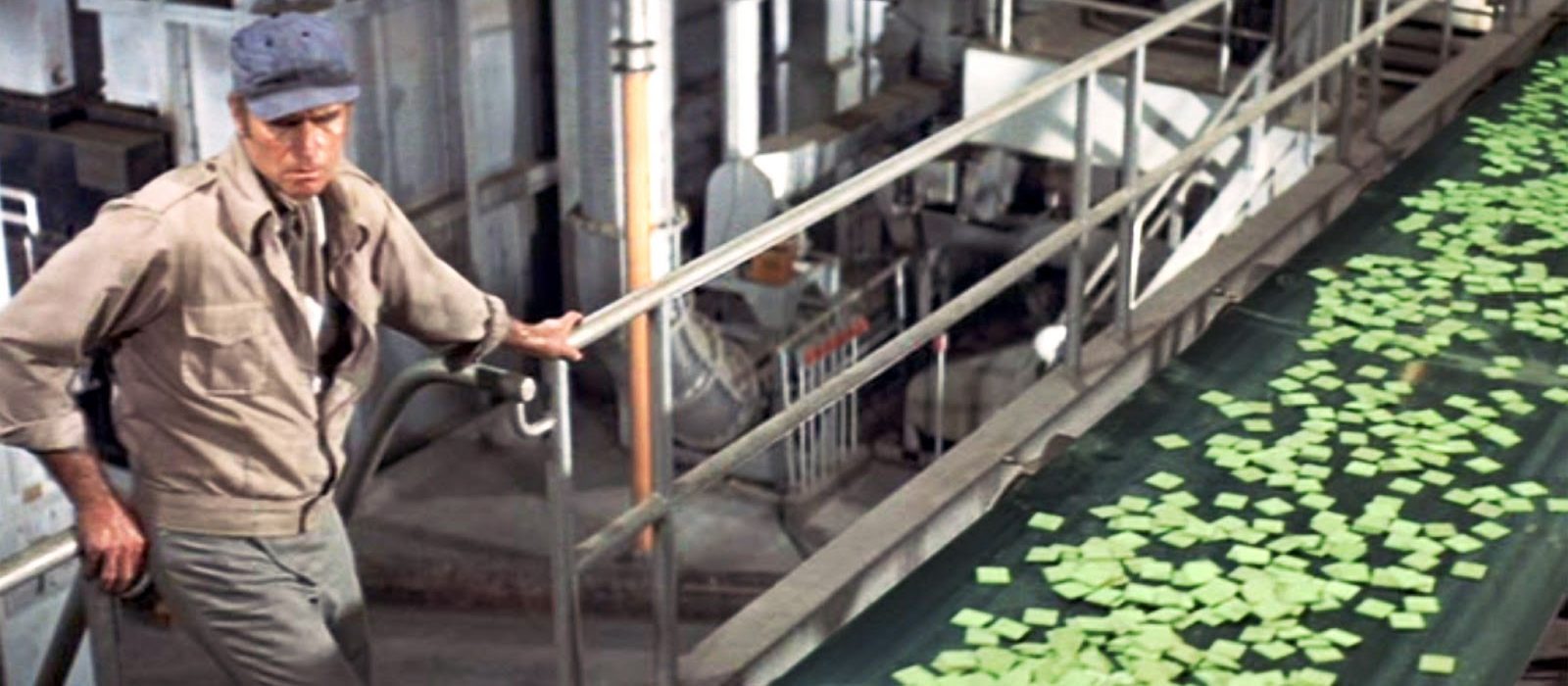
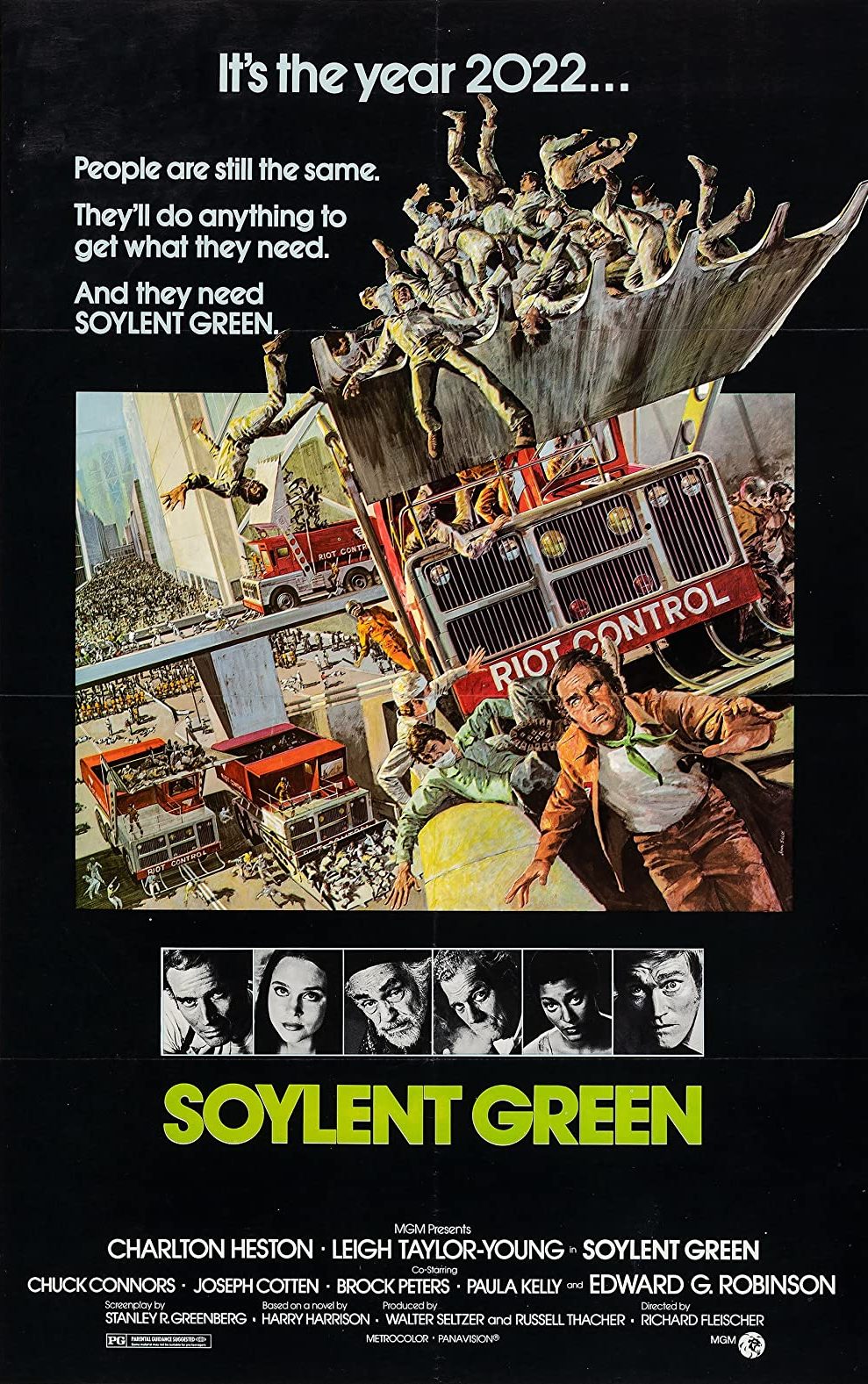
“Ah, people were always lousy… But there was a world, once.”
It would be a mistake to assume that the horrifying revelation that comes in the final frames of Soylent Green—a moment that’s been parodied so frequently since the film’s 1973 release that most first-time viewers are already aware of it—is anything more than a final flourish; a cherry on top of the sundae or frosting on the cake, however distasteful those analogies may seem. To do so would be to discount the grounded, artistic, alarming, and astutely rendered (if not exactly profound) presentation of a bleak sci-fi-tinged future that leads up to it. That the film doesn’t hinge on its gut-churning twist, but rather defines itself by a meandering exploration of its well-formed dystopian NYC, is to its ultimate benefit, and ensures that even a pop culturally–informed audience will find plenty to ruminate on.
Based on Harry Harrison’s Make Room! Make Room!, a forward-thinking novel written by an author concerned with overpopulation, climate change, and the hoarding of resources, Richard Fleischer’s film takes the familiar form of a murder investigation.
It begins with a montage of old photographs, initially detailing the onset of large scale industry and economic prosperity before gradually transitioning to a crowded, polluted, and rundown society. Forty million people now clog the streets of New York City, the vast majority of them scouring for sustenance and shelter beneath a haze of green smog that hovers over the streets. Solutions for rampant unemployment and rising crime rates have failed to emerge, but the Soylent Corporation has risen to the challenge of combating the food shortage by developing vegetable cubes that provide basic nutrition to the masses of vagrants. Their new product, a plankton-based cracker, has proven so popular that they’ve taken to rationing supplies and distributing the tasteless morsels only on Tuesdays. If Soylent Green were remade today, it would undoubtedly utilize digital effects; but Fleischer’s decaying New York is practically achieved and all the better for it—never mind that some of the effects look dated now.
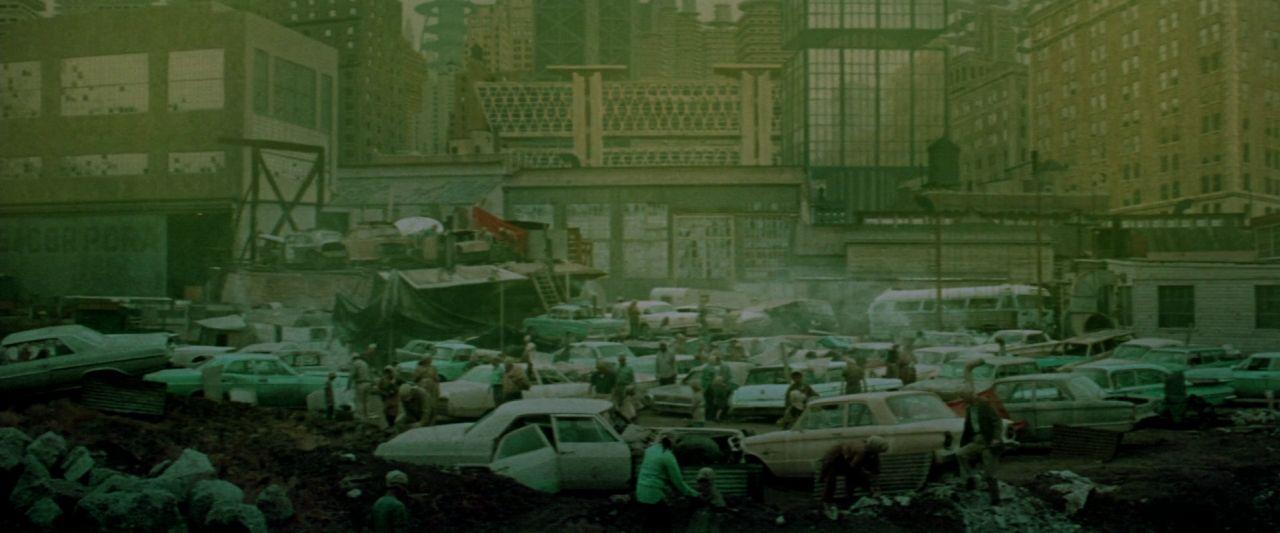
In a grungy apartment, likewise overrun with malnourished hordes, Detective Thorn (Charlton Heston) lives with his old mentor Sol (Edward G. Robinson), a bookish police analyst who powers the single lightbulb illuminating their shared living space by peddling a jury-rigged exercise bike. Their lodgings are modest, but still better than most. Indeed, when Thorn goes out on duty, he must first trundle over a logjam of sleeping bodies that clogs the staircase. Only the city’s elite can afford the luxurious penthouse apartments that come with clean water, air conditioning, and in-house concubines/slaves. It’s one of these rich and powerful, a man called Simonson (Joseph Cotten) who sits on Soylent’s corporate board, that finds himself brained in the film’s early going.
We don’t see rich people here anymore. There isn’t even enough room for the poor.
The circumstances are suspicious—Why didn’t he put up a fight against the amateur burglar? Why didn’t the burglar actually take anything? Why was Simonson’s bodyguard (Chuck Connors) out shopping with his mistress (Leigh Taylor-Young)? How can the bodyguard afford such luxuries as strawberry jam?—and eventually Thorn’s investigative efforts lead him to a shelter run by the Catholic Church where a dumbstruck priest (Lincoln Kilpatrick) had heard the dead man’s horrifying final confession. But the priest won’t share his secret with Thorn and is soon gunned down himself. Several attempts soon follow on Thorn’s life, too, as he ignores his supervisor’s (Brock Peters) request to close the case and pokes around the city searching for more clues.
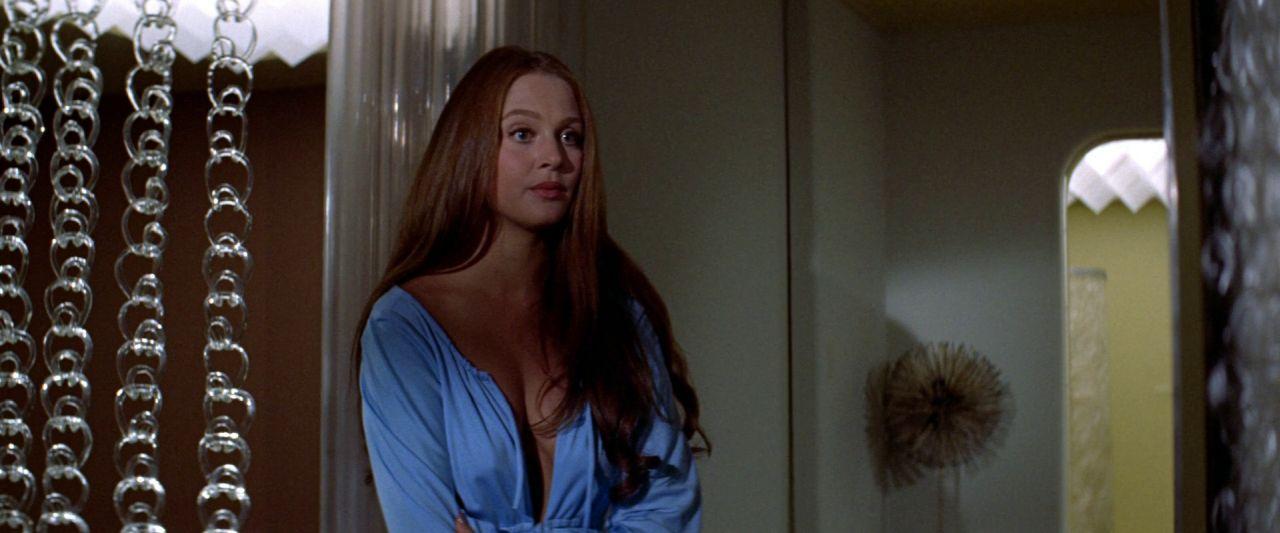
Though Thorn is an officer of the law and is clearly driven to perform his detective duties to the best of his abilities, he frequently uses his police badge as a license for questionable activities. Upon entering any abode, and most certainly Simonson’s expansive pad, he spends as much time poking around for valuables like booze, beef, paper, pencils, cigarettes, and soap as he does looking for clues or asking questions; although sometimes those luxury items are clues in themselves. He even makes use of the mistress’s sexual services and showers in the dead man’s bathroom.
In any case, as Fleischer simultaneously fleshes out the dying world and dances around the demise of Simonson, the mystery of the titular wafers nearly falls by the wayside. Indeed, although the revelation of their ingredients list provides the film its nasty final twist, it is almost a thematic afterthought.
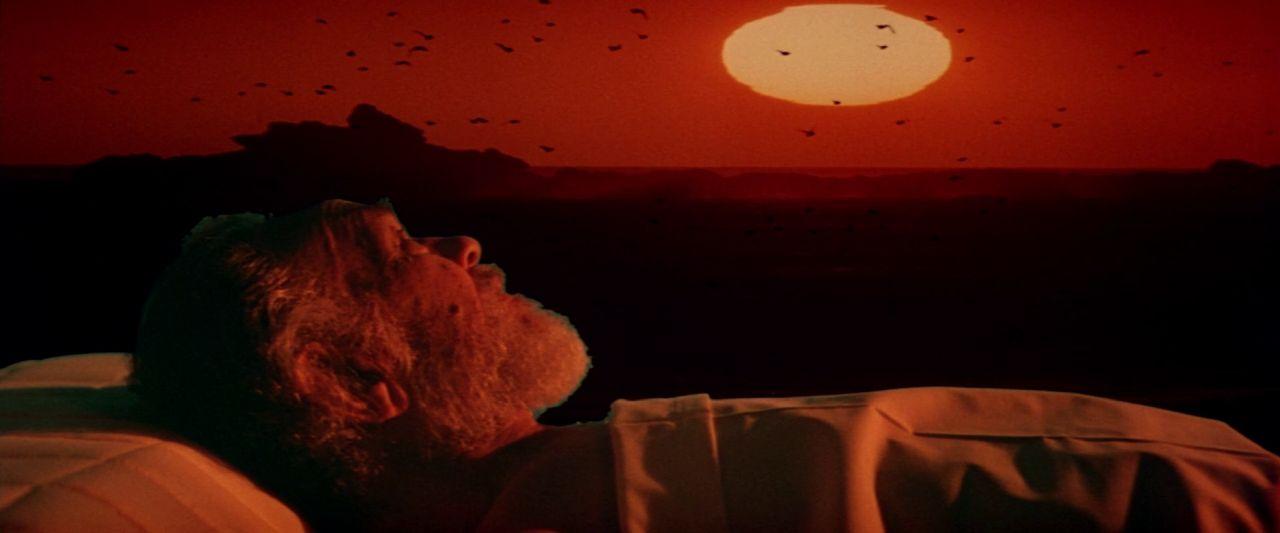
Vaguely sci-fi in theme, Soylent Green grounds itself by extrapolating legitimate socioeconomic fears into eerily plausible and terrifying outcomes and exploring them through a familiar genre.1 The attentive world-building, then, is what makes the film. This is encapsulated beautifully by the quasi-father/son dynamic between Thorn and Sol, the latter of whom is old enough to recall the old world. When Thorn nabs a small hunk of beef from Simonson’s flat and surprises his old friend, it’s enough to bring the man to tears. Upon discovering that the dying oceans are incapable of producing plankton—and deducing the horrifying truth—Sol is so shaken that he enters a government-run euthanasia clinic where he is lulled into glory by classical music and a projected montage of life before the apocalypse. It strikes a poignant chord and posits the transcendent ability of art (specifically film) as a means for storing memories and enhancing one’s appreciation for life. These were Robinson’s final moments on screen; after acting in more than a hundred films, he passed away shortly after completing his scenes for Soylent Green.
Though like most exercises in genre formulas, the details of the plot will undoubtedly be forgotten, that’s okay because the atmosphere and the intricate world-building will not be. The background becomes the foreground as the gaseous green haze, the dump trucks scooping rioters into their compacting bins, the malnourished homeless languishing in every nook and cranny, the Soylent factory conveyor belts, the crying child tethered to his dead mother, Thorn’s casual thievery, the prostitute’s humanity, and the priest’s soulweariness take precedence over the minutiae of Thorn’s investigation. The viewer is left less with a story than with a roughly sketched impression of a bleak future world.
1. Let’s set aside the fact that the date of its setting has come and gone without humanity really changing course and that none of its predictions have come true. Indeed, the same fears still rule in the minds and hearts of many.